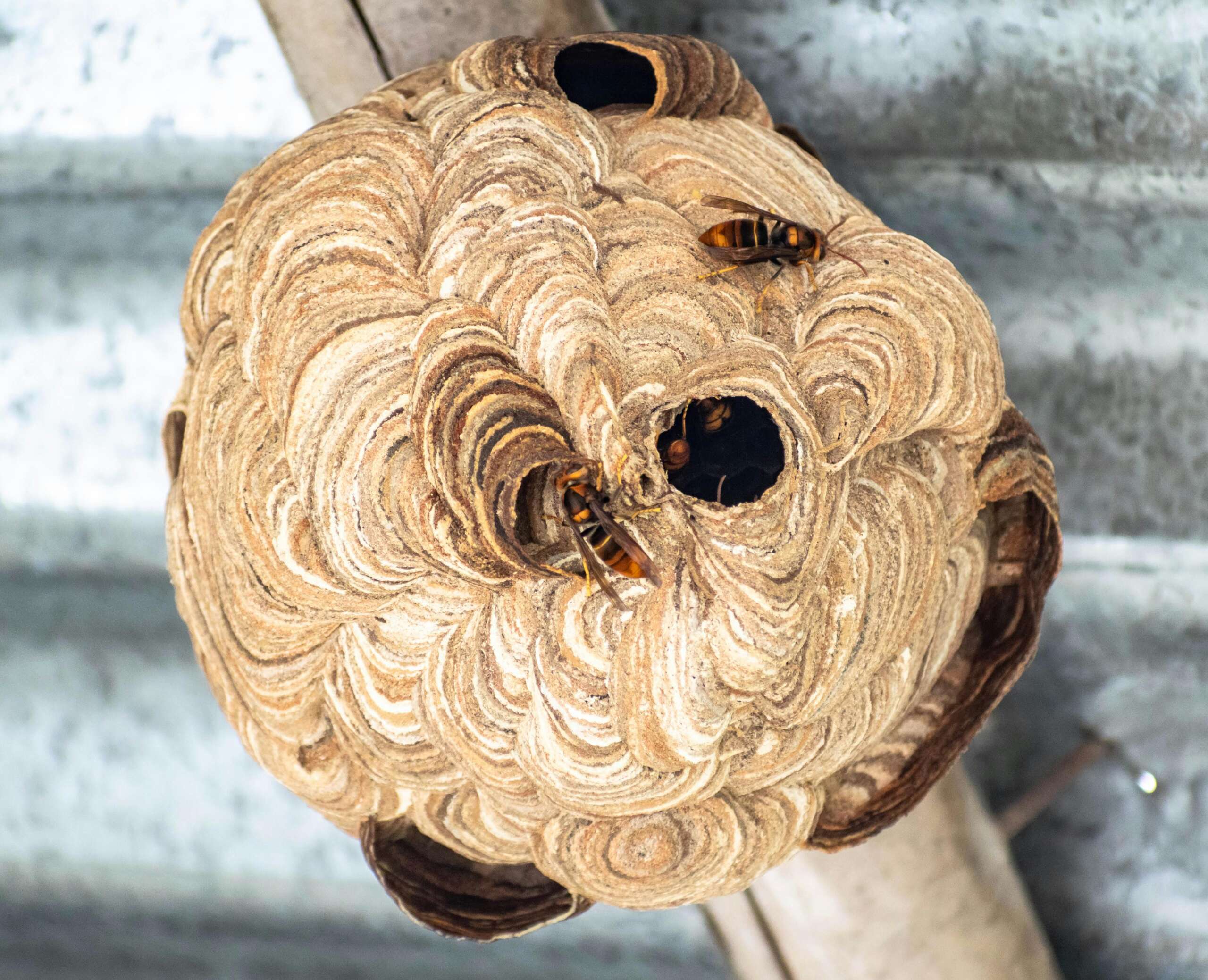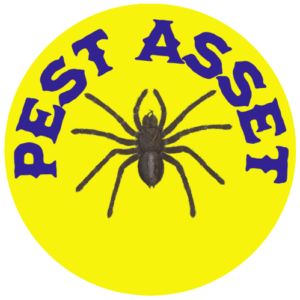
Buzzy Bodies in the Backyard: Unveiling the Mystery of Bees vs. Wasps
Table of Contents
Have you ever enjoyed a refreshing glass of lemonade only to be dive-bombed by buzzing insects? Were you unsure if they were friendly bees vs. wasps? Fear not, nature enthusiasts! Today, we’ll become insect detectives, learning how to identify bees and wasps and how to tell them apart.
Bees and wasps are both flying insects that belong to the same order (Hymenoptera), but they have some key differences. Knowing these distinctions can help you avoid unnecessary stings and appreciate the fascinating roles these creatures play in our ecosystem.

The Lookalike Game: Unveiling the Physical Differences of Bees Vs. Wasps
While bees and wasps might seem like buzzing doppelgangers at first glance, a closer look reveals some telltale signs that set them apart. Here’s a breakdown of their physical characteristics:
- Body Shape:
- Bees: Bees tend to have a rounder, plumper body. Imagine a cuddly teddy bear compared to a sleek athlete.
- Wasps: Wasps have a more slender, narrow waist, almost like they’re pinched in the middle. Think of a curvy hourglass compared to a straight line.
- Hair vs. Smooth:
- Bees: Bees are typically covered in fuzzy hairs all over their bodies. These hairs help them collect pollen from flowers, which plays a crucial role in plant reproduction. Imagine a fluffy sweater compared to a sleek leather jacket.
- Wasps: Wasps have a smoother, hairless body. While some wasp species might have some hair, it’s usually much less noticeable than on a bee.
- Color Scheme:
- Both Bees and Wasps: While yellow and black are common colors for both bees and wasps, it’s not the only option! There are many species with variations in color, including brown, red, and even metallic blue or green.

Beyond the Basics: Distinctive Features of Specific Types
The world of bees and wasps is vast and diverse! Let’s explore some additional features that can help you identify specific types:
- Bees:
- Honeybees: Honeybees are the most well-known bee species. They have a round, golden body with black stripes and fuzzy legs. Look for pollen clinging to their hairy bodies!
- Bumblebees: Bumblebees are large, fuzzy bees with black and yellow markings. They’re often seen buzzing around flowers, collecting pollen.
- Wasps:
- Yellowjackets: These common wasps have a yellow and black striped body and a narrow waist. They’re known for being aggressive and are attracted to sweet drinks and food.
Opens in a new window en.wikipedia.org - Paper Wasps: These wasps have a slender body with yellow markings and brown or black abdomens. They build papery nests and are generally less aggressive than yellowjackets.
Opens in a new window en.wikipedia.org - Hornets: Hornets are the largest wasps in North America. They resemble yellowjackets but are bigger, with a characteristic orange head. While they can sting, they’re generally less aggressive unless threatened.
- Yellowjackets: These common wasps have a yellow and black striped body and a narrow waist. They’re known for being aggressive and are attracted to sweet drinks and food.
Remember: These are just a few examples, and there are many other bee and wasp species out there! Consulting a field guide or online resources with pictures can help you identify specific types you encounter.

Beyond Looks: Behavioral Differences Between Bees Vs. Wasps
While physical appearance plays a part, behavior can also be a good indicator of whether you’re dealing with a bee or a wasp. Here are some clues:
- Beehavior (Bee Behavior): Bees are generally more docile creatures. They’re primarily focused on collecting pollen and nectar from flowers to produce honey or feed their young. While they can sting if threatened, they’re less likely to do so than wasps.
- Wasp-icious (Wasp Behavior): Wasps, on the other hand, can be more aggressive, especially yellowjackets. They’re predators and scavengers, feeding on insects and other small invertebrates. They might also be attracted to your picnic lunch and become defensive if you try to shoo them away.
Think about this: Why do you think bees are less likely to sting than wasps?
Keeping Unwanted Buzzers at Bay: Prevention Tips
While some bee and wasp interactions are inevitable outdoors, there are steps you can take to minimize their presence around your home:
- Eliminate Food and Drink Attractions: Wasps, especially yellowjackets, are drawn to sugary drinks and food scraps. Keep outdoor eating areas clean, and dispose of garbage properly in sealed bins.
- Minimize Sweet Scents: Strong perfumes or lotions with floral scents can attract bees and wasps. Opt for natural fragrances or unscented products when spending time outdoors.
- Seal Up Potential Nesting Sites: Wasps often build nests in sheltered areas like eaves, under decks, or around attics. Regularly inspect your home for potential nesting sites and seal any openings with caulk or screening.
- Be Cautious Around Flowers: Bees are naturally attracted to blooming flowers. If you’re allergic to bee stings, avoid spending extended periods near gardens or flowering plants.
- Consider Natural Repellents: Planting certain herbs like citronella or peppermint around your patio might help deter wasps.
Remember: If you encounter a bee or wasp, stay calm and avoid swatting at it. Sudden movements can provoke them to sting. If a bee or wasp lands on you, gently brush it away or walk away slowly.

When to Call in the Professionals: Pest Asset to the Rescue!
While some bee and wasp encounters can be managed with preventative measures, sometimes professional help becomes necessary. Here’s when to call Pest Asset:
- Large or Aggressive Wasp Nests: If you discover a large wasp nest, especially near your home entrance or a high-traffic area, it’s best to call a professional for safe removal.
- Multiple Stings: Bee and wasp stings can be painful and even dangerous for people with allergies. If you’ve been stung multiple times, seek medical attention and consider professional pest control to address the source of the problem.
- Recurring Infestations: If you’re experiencing repeated wasp or bee problems despite preventative efforts, a professional pest control company like Pest Asset can help identify the attractants and develop a long-term control strategy.
At Pest Asset, we understand the importance of creating a safe and enjoyable outdoor environment for your family. Our experienced technicians are skilled in identifying different bee and wasp species and can develop a customized treatment plan to address your specific situation.
We offer a variety of safe and effective methods for wasp and bee control, prioritizing the safety of your family and pets. We can also provide advice on preventative measures to minimize the risk of future infestations.
Beyond Fear: The Buzz on the Importance of Bees and Wasps
While bee stings can be unpleasant, it’s important to remember that bees and wasps play a vital role in our ecosystem. Here’s why these buzzing creatures deserve some respect:
- Bees: The Pollination Powerhouse: Bees are essential pollinators, transferring pollen between flowers, which allows plants to reproduce. From fruits and vegetables to nuts and flowers, bees play a crucial role in our food supply.
- Wasps: Natural Pest Control: Wasps act as natural predators, helping to control populations of other insects like caterpillars and flies. This helps maintain a healthy balance in the environment.
By understanding the differences between bees and wasps and taking preventative measures, you can coexist peacefully with these fascinating creatures. And if you need help managing a wasp or bee problem, Pest Asset is here for you!
Call Pest Asset today at (440) 363-6593 or visit our website at pestasset.com for a free consultation and quote. Together, let’s create a safe and enjoyable outdoor space for your family, free from unwanted buzzing guests!
Looking for More Information?
Here are some helpful resources for further learning about bees and wasps:
Remember, with a little knowledge and the help of professionals like Pest Asset, you can transform your fear of bees and wasps into an appreciation for their important role in our world!


